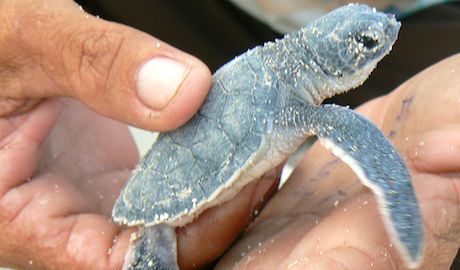
Where does this issue fit into the Sustainable Development Goals?
This issue is addressed in three of the SGDs.
Goal 13: Take urgent action to combat climate change and its impacts
People are experiencing the significant impacts of climate change, which include changing weather patterns, rising sea level, and more extreme weather events. The greenhouse gas emissions from human activities are driving climate change and continue to rise. They are now at their highest levels in history. Without action, the world’s average surface temperature is projected to rise over the 21st century and is likely to surpass 3 degrees Celsius this century—with some areas of the world expected to warm even more. The poorest and most vulnerable people are being affected the most.
Affordable, scalable solutions are now available to enable countries to leapfrog to cleaner, more resilient economies. The pace of change is quickening as more people are turning to renewable energy and a range of other measures that will reduce emissions and increase adaptation efforts.
Facts & Figures
Thanks to the Intergovernmental Panel on Climate Change we know:
- From 1880 to 2012, average global temperature increased by 0.85°C. To put this into perspective, for each 1 degree of temperature increase, grain yields decline by about 5 per cent. Maize, wheat and other major crops have experienced significant yield reductions at the global level of 40 megatonnes per year between 1981 and 2002 due to a warmer climate.
- Oceans have warmed, the amounts of snow and ice have diminished and sea level has risen. From 1901 to 2010, the global average sea level rose by 19 cm as oceans expanded due to warming and ice melted. The Arctic’s sea ice extent has shrunk in every successive decade since 1979, with 1.07 million km² of ice loss every decade
Find our more about this Sustainable Development Goal.
Goal 14: Conserve and sustainably use the oceans, seas and marine resources
The world’s oceans – their temperature, chemistry, currents and life – drive global systems that make the Earth habitable for humankind.
Our rainwater, drinking water, weather, climate, coastlines, much of our food, and even the oxygen in the air we breathe, are all ultimately provided and regulated by the sea. Throughout history, oceans and seas have been vital conduits for trade and transportation.
Careful management of this essential global resource is a key feature of a sustainable future.
Fast Facts
- Over three billion people depend on marine and coastal biodiversity for their livelihoods
- As much as 40 per cent of the world oceans are heavily affected by human activities, including pollution, depleted fisheries, and loss of coastal habitats
- Oceans absorb about 30 per cent of carbon dioxide produced by humans, buffering the impacts of global warming
Find our more about this Sustainable Development Goal. Goal 15: Sustainably manage forests, combat desertification, halt and reverse land degradation, halt biodiversity loss
Forests cover 30 per cent of the Earth’s surface and in addition to providing food security and shelter, forests are key to combating climate change, protecting biodiversity and the homes of the indigenous population. Thirteen million hectares of forests are being lost every year while the persistent degradation of drylands has led to the desertification of 3.6 billion hectares.
Deforestation and desertification – caused by human activities and climate change – pose major challenges to sustainable development and have affected the lives and livelihoods of millions of people in the fight against poverty. Efforts are being made to manage forests and combat desertification.
Fast Facts
- Around 1.6 billion people depend on forests for their livelihood. This includes some 70 million indigenous people
- 2.6 billion people depend directly on agriculture, but 52 per cent of the land used for agriculture is moderately or severely affected by soil degradation
- Of the 8,300 animal breeds known, 8 per cent are extinct and 22 per cent are at risk of extinction
Find our more about this Sustainable Development Goal.